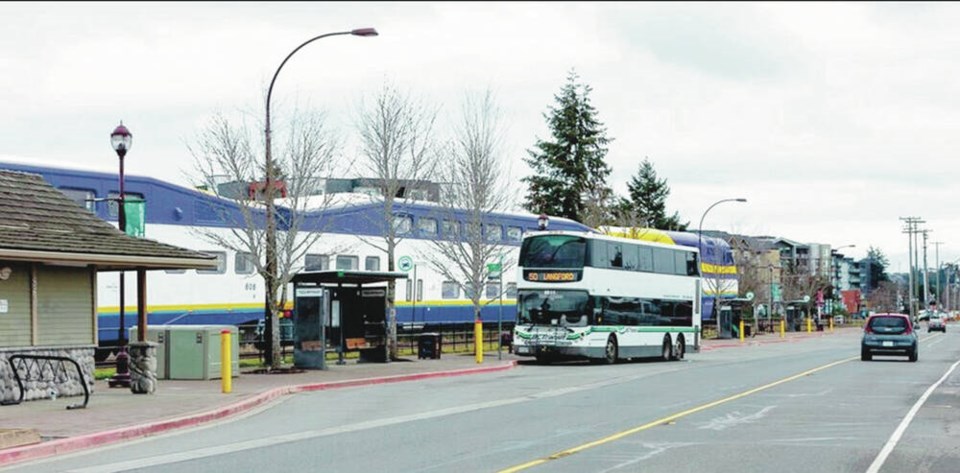Mayors of the most populous West Shore communities are behind the idea of a commuter rail system between Langford and Victoria.
Passengers would hop on a modern train for a 30-minute ride between Langford and Victoria. Trains would run during peak hours and during the day.
The commuter line would be part of a $431-million rail system between Courtenay and Victoria, and out of Duncan under a plan introduced this week by the corridor’s owner, the non-profit Island Corridor Foundation. A freight service and tourist trains are also planned.
Langford Mayor Stew Young said of the plan: “I think it is the most realistic one I’ve seen in 10 years.”
He described himself as a “big fan” of using the corridor, where the former E&N ran, for public transit.
At $400-million-plus for close to 300 kilometres, “I think that’s probably the cheapest corridor that you are ever going to have,” Young said.
Langford designed its density near the corridor, meaning that residents would have easy access to a commuter line.
Rail would have environmental advantages — it has lower emissions compared with vehicles — and would reduce traffic on the roads.
Colwood Mayor Rob Martin said: “Rail is essential and we have to get to a multi-modal system within Victoria.”
Although a commuter service running along the E&N line would not go through Colwood, Martin, who sits on the Victoria Transit Commission, said spur lines into Colwood would link to the service.
He foresees public transit systems featuring light rail, buses and rail, saying it is not an either-or choice.
Citizens tell him they want to see rail return to the lower Island, he said.
Rail service ended in 2011 over concerns about the poor condition of the infrastructure.
The foundation’s new business case is well under the budget set by a consultant for the province in 2020, which figured an up-island service plus commuter line would cost more than $1 billion.
Larry Stevenson, foundation chief executive, has always said a system could be put in at a far lower cost. The foundation favours working with the Ministry of Transportation on the plan.
The foundation said outstanding land issues with First Nations must be settled before putting rail in place again.
Young said that funding could come more from the federal than the provincial government “because they were the ones really in charge of it [establishing the railway line] in the beginning.” Langford might be willing to contribute as well, he said.
The Ministry of Transportation and Infrastructure said it is committed to finding the best use for the Island Rail Corridor as well as to supporting First Nations interests in discussions.
The foundation gave the province an opportunity to review the business case prior to its release. B.C.’s feedback includes the lack of First Nations consultation and lack of contingency in the proposed costs, the ministry said.
“The interests of First Nations are a critical consideration to the province as we continue our work to determine the best use of this corridor,” the ministry said.
As well, the province is watching for the federal response to a B.C. Court of Appeal ruling in which the Snaw-Naw-As First Nation lost an appeal to regain a portion of the railway corridor land.
The court decided the federal government has until March 2023 to decide if it wants to restore the line and contribute funds.
No commitment has been made by the province regarding the rail corridor and more discussion is needed, the ministry said.
cjwilson@timescolonist.com

